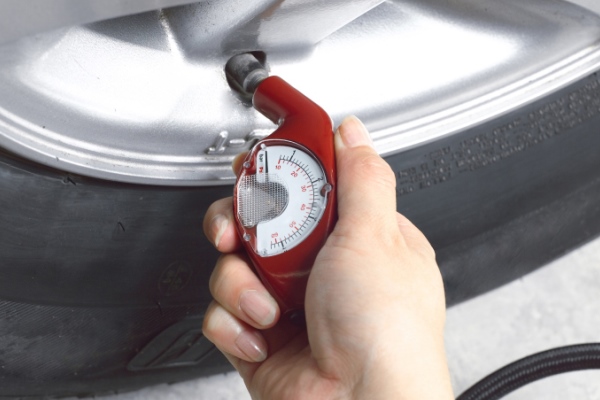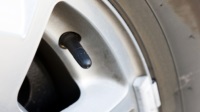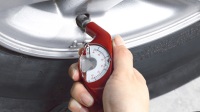This post was originally published on www.geico.com

Every vehicle comes with a manufacturer-recommended tire pressure range. Tire or air pressure is measured in PSI (pounds per square inch). It is a common misconception that the PSI on the side of the tire is the recommended level. This is incorrect. The PSI on the tire is the MAXIMUM level the tire can hold. Additionally, having too low of a PSI may cause damaging wear on the tires, which can lead to poor fuel efficiency and flat tires.
Keep these items in your vehicle at all times:
- Tire pressure gauge (either a standard or a digital)
- Wipes for cleaning your hands
Step-by-step guide:
- The only way to know if a tire is truly at the appropriate pressure is by using a gauge. Often a tire will look fine, but it is actually low. When you check tire pressure, be sure to check all four tires.
- Find the recommended PSI for your vehicle. The best place to locate this information is on the inside of the driver’s side doorjamb. As a back-up, check your owner’s manual.
- It’s best to let your tires cool and rest prior to checking their pressure. If you check them while they’re hot, you will not get an accurate reading.
- Remember that you’ll need to work on all four tires (or two if you have a motorcycle). Locate the small little hose on the tire that is the air valve.
 Remove the cap and keep it someplace safe like your pocket. You don’t want it to roll away or get blown or kicked under your car. NOTE: These air valves are usually dirty so if you don’t have gloves, avoid touching your clothing until you can wipe your hands clean.
Remove the cap and keep it someplace safe like your pocket. You don’t want it to roll away or get blown or kicked under your car. NOTE: These air valves are usually dirty so if you don’t have gloves, avoid touching your clothing until you can wipe your hands clean. - Press the tire pressure gauge against the valve. Use firm pressure and ensure that the seal between the gauge and the valve is completely solid. Release after a second or two. NOTE: If you hear any loud hissing, you’re letting air escape and you won’t get an accurate reading.

- Use an air compressor or an air machine (available at many gas stations) to add (or release) air to match the recommended PSI. The air machine nozzle must be firmly and securely pressed onto the tire valve or you will let air out of the tire.
- Check the pressure again to make sure it’s correct. And remember, never overfill the tires.
- Repeat for each of the remaining tires. Be sure to check your spare tire, too!
https://www.youtube.com/watch?v=nRJ2L7MXNjY
Whether you’re on the road or at home, having GEICO Emergency Roadside Assistance on your auto insurance policy is a must-have for things like a flat tire, lock-out or breakdown. Add it to your policy for just pennies a day per vehicle.
Need help right away? Click here to request roadside assistance.
[ad_1]
